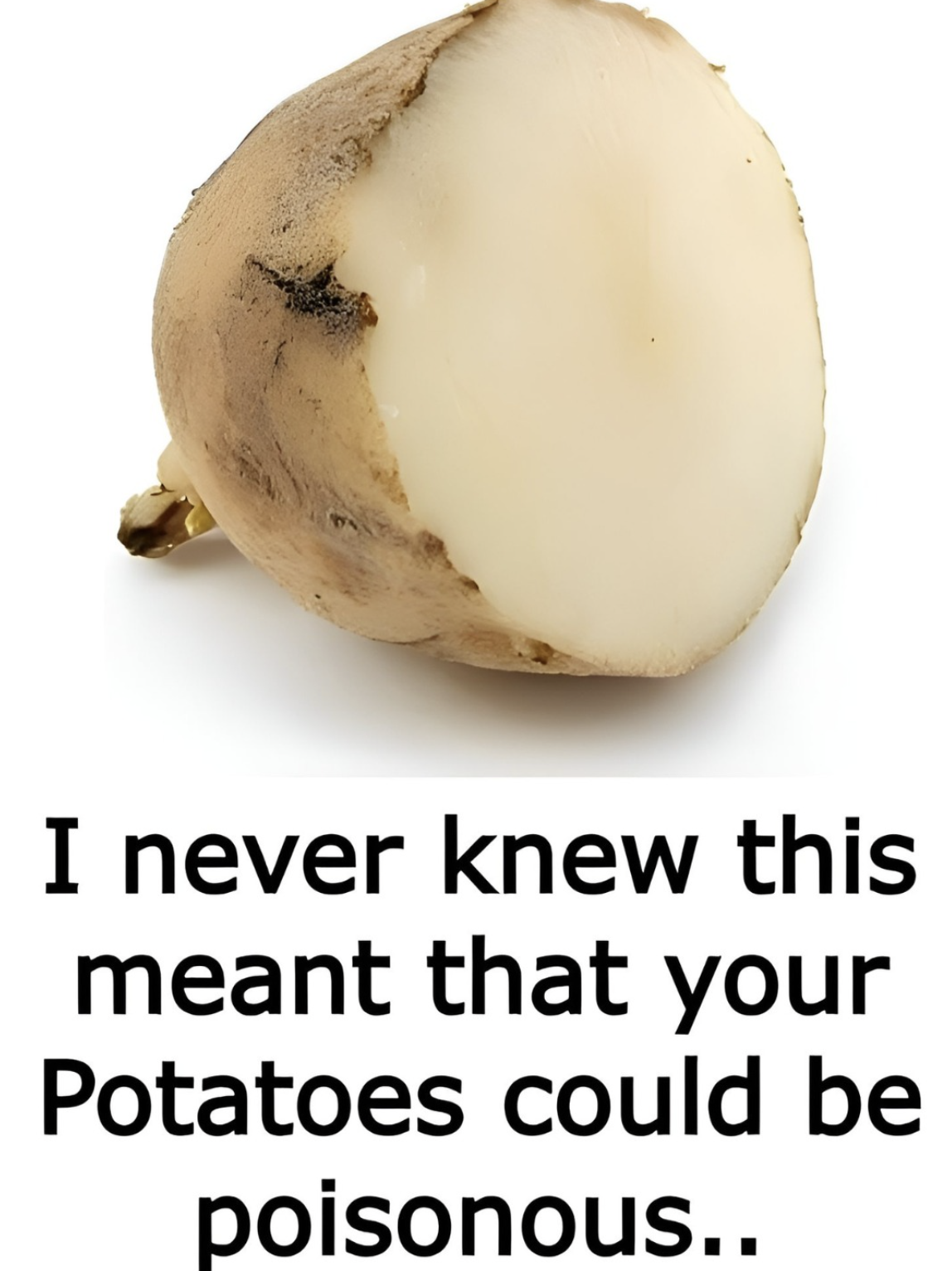It’s produced when potatoes are:
Exposed to light
Stored too long
Damaged or sprouting
Its job? To deter pests and insects.
But in high levels, it can affect humans too.
Symptoms of Solanine Poisoning:
Nausea, vomiting
Within a few hours
Headache, dizziness
Mild exposure
Stomach cramps, diarrhea
Moderate exposure
Confusion, rapid pulse
Severe cases (rare)
✅ Good news: You’d need to eat a large amount of green or sprouted potato to get seriously sick.
❌ But: Even small amounts can make sensitive people feel unwell.
🚩 3 Clear Signs Your Potato Is No Longer Safe to Eat
1. It’s Turned Green 🟢
This is the #1 red flag.
Green skin = chlorophyll, which isn’t harmful — but it’s a sign that solanine has also formed.
What to do:
Slight green spots? Cut them off deeply — remove at least ¼ inch beneath
Fully green? Toss the whole potato — solanine can spread through the flesh
✅ Pro Tip: Store potatoes in a dark place — light exposure starts the process in hours.
2. It’s Sprouting Heavily 🌱
A few tiny sprouts? Not the end of the world.
But a potato that looks like a science experiment?
That’s trouble.
Sprouting means the potato is breaking down its starches — and producing solanine and chaconine (another toxic compound).
What to do:
Small sprouts? Remove them completely, along with the « eyes » beneath
Long, thick sprouts? Compost it — the toxin levels are likely too high
⚠️ Never eat the sprouts — they’re the most concentrated source of toxins.
3. It’s Soft, Wrinkled, or Mushy 💧
A fresh potato should feel firm and solid.
If it’s:
Wrinkled
Sagging
Spongy to the touch
Dented when you press it
…then it’s past its prime.
Old, dehydrated potatoes not only taste bad — they can have higher solanine levels due to stress.
What to do:
Slightly soft? Cook immediately — don’t store longer
Very soft or mushy? Toss it — it’s not safe or tasty
Also, if it smells musty or sour? Definitely don’t eat it.
🛑 Bonus: When to Avoid Raw or Damaged Potatoes
Raw potatoes
Contain more solanine — never eat them raw
Bruised or cut potatoes
Store in the fridge and use quickly — exposure increases solanine
Green flesh inside
Cut out deeply — if widespread, discard
Bitter taste
Stop eating — bitterness is a sign of high solanine
✅ Note: Cooking does not destroy solanine — boiling, baking, or frying only reduces it slightly.
🥔 How to Store Potatoes Safely
Store in a
cool, dark, dry place
(like a pantry)
Don’t store in the fridge (can increase sugar)
Use a
paper or mesh bag
(allows airflow)
Don’t use plastic (traps moisture)
Keep away from
onions
(they release gases that speed sprouting)
Don’t wash before storing (moisture causes rot)
Use within
1–2 months
Don’t keep “forever” — rotate your stock
Also, never store potatoes in direct sunlight — even a windowsill can turn them green in a day.
🧠 Final Thoughts: Respect the Potato
We treat potatoes like they’re bulletproof.
They sit in the corner, quiet, unchanging.
But they’re alive.
They react.
They protect themselves.
And when stressed, they produce a toxin — not to hurt us, but to survive.
So next time you reach into your pantry…
Don’t grab the first potato you see.
Look at it.
Feel it.
Check for green, sprouts, softness.
Because sometimes, the difference between a comforting meal and a sick stomach…
Isn’t in the recipe.
It’s in the spud.
And once you know the signs?
You’ll never eat a risky potato again.
